Last Updated on May 12, 2025 by teamobn

Here are 7 fast-growing vegetables you can raise in your garden:
Growing a garden means cultivating patience as much as it means growing plants. In fact, one of the first things you learn when you start gardening is that you have no choice but to wait.
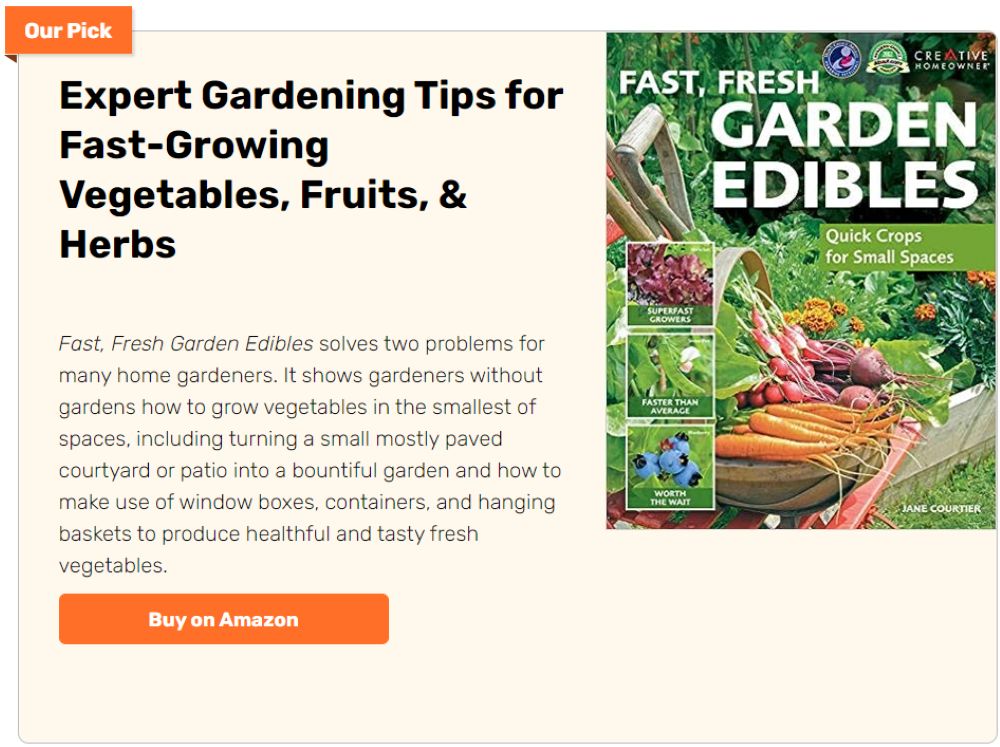
You wait for the growing season to arrive. You wait until it’s warm enough outside to work the soil. Then you wait for plants to grow in their own sweet time.
And if you happen to be raising watermelon, tomatoes, and peppers, then you are in for a particularly long wait.
Cultivating Fast Growing Vegetables
Contents
Of course, after a while, you also learn that there are ways to sidestep the lengthy waiting periods. You can always plant some fast-growing vegetables and harvest great fresh food for the table in a matter of weeks.
Arugula
This versatile table favorite has a slightly peppery flavor that makes it delicious in a salad. Some even use arugula as an alternative to basil pesto.
Tips to Growing Arugula
Arugula stands out among the fastest growing vegetables with its peppery leaves and quick maturity. It grows best in cool conditions where days do not exceed 75°F. You can start arugula seeds directly outdoors once the soil temperature reaches 45°F. Plant seedlings about four inches apart to allow airflow. Keep soil evenly moist by watering whenever the top inch feels dry.
Working a layer of organic compost into the bed before planting boosts fertility and moisture retention. Apply a balanced, water-soluble fertilizer every three weeks to support steady leaf production.
Monitor for flea beetles and use floating row covers until foliage is established. Mulch with straw to regulate soil temperature and suppress weeds. Harvest outer leaves when they reach two to three inches long to encourage continuous growth.
Dishes You Can Make with Arugula
Among the fastest growing vegetables, arugula delivers a peppery kick to simple dishes. For a bright arugula salad, toss four cups of fresh leaves with thin pear slices, crumbled feta, and toasted walnuts. Drizzle olive oil and lemon juice, then season with salt and pepper. Let it rest five minutes so flavors meld.
For a bold pesto, blend two cups of arugula with garlic, pine nuts, and Parmesan until coarse. Stream in olive oil until saucy, then warm it gently with reserved pasta water. Toss with al dente spaghetti and garnish with extra cheese. For a twist, swap walnuts for almonds or add red pepper flakes. Store extra pesto in an airtight jar and refrigerate it for up to five days. It’s a bold flavor just a few weeks after sowing and shows why arugula ranks among the fastest growing vegetables for home cooks.

Cress
Cress is another unique, fast-growing green that is popular thanks to its peppery flavor. Clever gardeners will often grow cress throughout the winter as a delicious year-round microgreen.
Tips to Growing Cress
Cress is one of the fastest growing vegetables and can be ready to harvest in as few as fourteen days. Sow cress seeds densely on the soil surface or in a shallow seed tray filled with seed-starting mix. Keep the tray covered with a clear lid or plastic wrap until seedlings appear to maintain moisture.
Provide bright, indirect light to avoid leggy stems and encourage sturdy growth. Mist seedlings daily or water from below to avoid disturbing the seeds. Once seedlings reach two inches tall, thin them to one-inch spacing for proper airflow.
Work compost into the top soil each planting cycle to supply nutrients throughout rapid growth. Rotate your planting location every three weeks to reduce disease pressure. Cover outdoor sowings with row covers to protect against slugs and birds. Harvest by cutting stems just above the soil when leaves reach two inches long.
Dishes You Can Make with Cress
Garden cress is one of the fastest growing vegetables with harvests in just two weeks. For elegant tea sandwiches, spread softened butter on thin rye bread, top with fresh cress leaves and thin cucumber rounds. You can swap butter for cream cheese for a tangy twist. Cut off crusts and slice into triangles for easy serving.
For a silky cress soup, sauté shallots in butter until translucent, add vegetable stock, then stir in a generous handful of cress and cook two minutes. Blend until smooth, season with salt and white pepper, then swirl in cream. Serve hot in small bowls and garnish with cracked pepper. Pair with crusty bread or a light salad for a complete starter. This quick green ranks high in any kitchen.
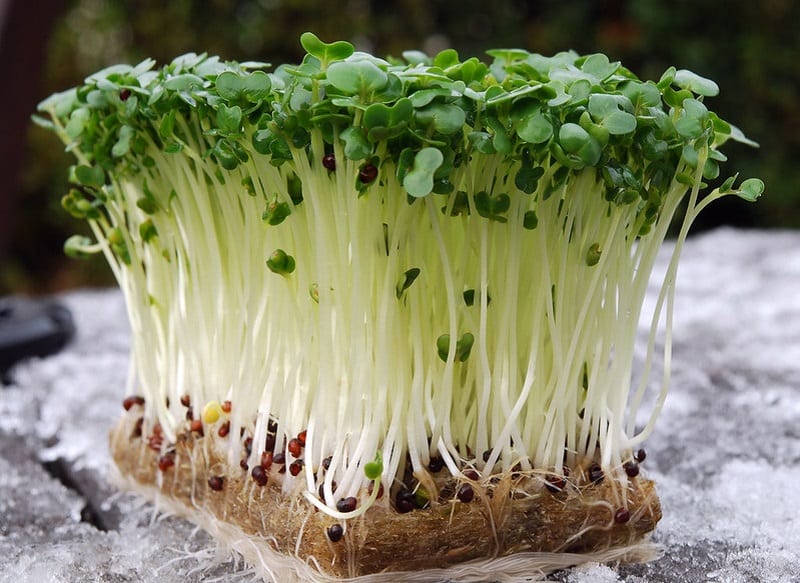
Kale
Kale is a hardy, cold-tolerant vegetable that can be grown almost year-round in some places. Kale is easy to start directly outdoors but needs a good deal water to thrive.
Tips to Growing Kale
Kale ranks among the fastest growing vegetables and tolerates frost better than most greens. Plant kale seeds directly outdoors when soil temperatures reach 40°F for a spring crop. Space seedlings about twelve inches apart in fertile, well-draining soil amended with compost. Water regularly, aiming for one inch per week, to keep leaves tender and prevent bitterness.
Mulch around the base with straw or leaf mold to retain moisture and suppress weeds. Side-dress with nitrogen-rich fertilizer four weeks after planting to encourage leaf production. Remove lower leaves first, picking every two weeks to stimulate new growth.
Watch for cabbage worms and apply organic Bacillus thuringiensis if you find holes. Succession sow every four weeks until midsummer for continuous harvests. Use row covers in early spring and fall to extend your kale season into colder months.
Dishes You Can Make with Kale
As a hardy example of the fastest growing vegetables, kale tolerates frost and multiple harvests. For a crisp kale salad, massage four cups of chopped leaves with two tablespoons of olive oil. Add a squeeze of lemon juice and toss until leaves soften. Stir in shaved Parmesan and toasted sesame seeds. Let it rest ten minutes so the flavors develop.
For a warming soup, sauté one diced onion and two garlic cloves in butter until fragrant. Add three cups of chopped kale, two cubed potatoes, and four cups of vegetable stock. Simmer until potatoes are tender, then blend half for creaminess and leave the rest chunky. Season with salt, pepper, and a pinch of nutmeg. Ladle into bowls and garnish with a dollop of Greek yogurt. Serve with a slice of crusty bread. You can swap Parmesan for nutritional yeast for a vegan twist.
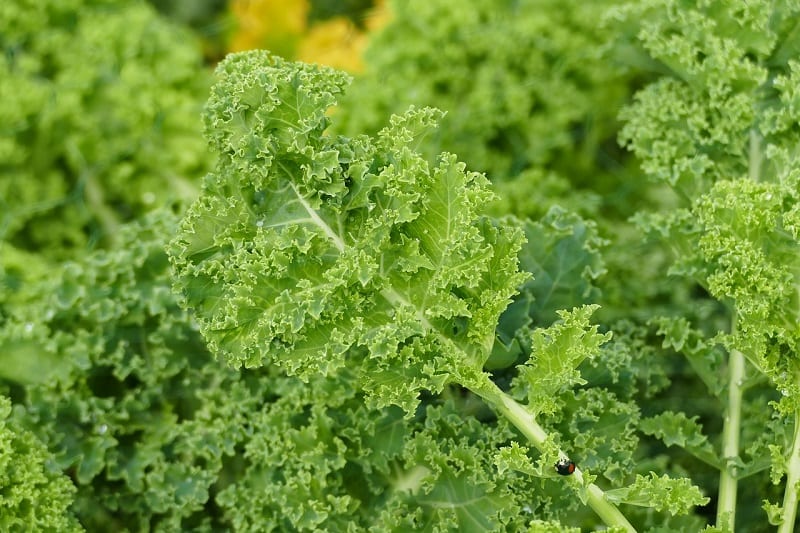
Radishes
Radishes are not only among the fastest-growing vegetables you can grow, but they are also among the most delicious. The radish is a great plant for gardeners who live in areas with short growing seasons. They can be planted once in the spring and once in late summer.
Tips to Growing Radishes
Radishes are among the fastest growing vegetables, often maturing in just twenty-five days. Sow radish seeds directly into loose, well-draining soil in early spring or late summer. Space seeds one inch apart and cover lightly with half an inch of soil for fast germination.
Water consistently to keep soil moist and to prevent roots from becoming woody. Thin seedlings to two inches apart once leaves appear to ensure proper root development. Avoid high-nitrogen fertilizers that encourage leafy growth at the expense of root size. Mulch between rows to regulate soil temperature and retain moisture.
Harvest radishes when roots reach the desired size, usually after three to four weeks. Grow quick varieties like ‘Cherry Belle’ or ‘French Breakfast’ for the fastest results. Rotate planting locations yearly to reduce the risk of root diseases in the soil.
Dishes You Can Make with Radishes
Radishes rank high among the fastest growing vegetables, maturing in as few as twenty-five days. For an elegant radish toast, mix softened butter with chopped chives and a pinch of salt. Spread it onto warm crusty bread, top with thin radish slices, and garnish with microgreens. The creamy butter balances the radish’s crisp spiciness.
For a tangy radish slaw, shred a bunch of radishes and toss with rice vinegar, sugar, and soy sauce. Let it sit ten minutes, then fold in sliced green onions and fresh cilantro. Serve chilled alongside grilled meats or fish for a colorful crunch. These simple dishes highlight radish flavor just weeks after planting.
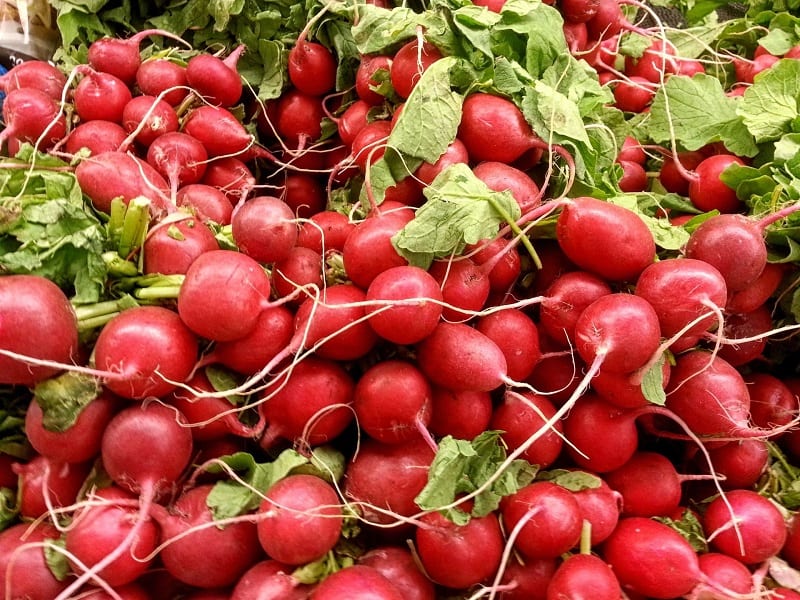
Spinach
Spinach is an excellent crop for succession planting. Because the leaves will be ready for harvest in as little as one month, you can grow multiple crops in one season.
Tips to Growing Spinach
Spinach is one of the fastest growing vegetables and thrives in cool weather. Plant it in loose, well-drained soil mixed with organic compost. Sow seeds when soil temperatures reach 40°F. Space seeds two inches apart in rows eight inches apart.
Keep soil moist by watering twice per week. Cover with straw mulch to conserve moisture and block weeds. Thin seedlings to four inches apart once true leaves appear. Apply an organic fertilizer when plants reach two inches tall. Give plants morning sun and afternoon shade in hot zones.
Protect young leaves with insect netting to deter pests. Succession sow every two weeks for a steady supply. Harvest outer leaves when they reach three inches long. You’ll enjoy fresh spinach leaves in about thirty days.
Dishes You Can Make with Spinach
Spinach is among the fastest growing vegetables and can fill bowls in about four weeks. For a bright spinach-strawberry salad, toss three cups of baby spinach with halved strawberries and sliced almonds. Add crumbled goat cheese for creamy contrast. Drizzle balsamic vinegar whisked with honey, then let it rest five minutes so flavors meld.
For a rich spinach gratin, preheat the oven to 375°F. Layer two cups of blanched spinach in a greased dish. Stir half a cup of heavy cream with a quarter cup of grated Gruyère cheese and pour it over the greens. Top with breadcrumbs and bake twenty minutes until golden. Serve warm, garnished with a pinch of nutmeg. Leftovers reheat well for lunch the next day.
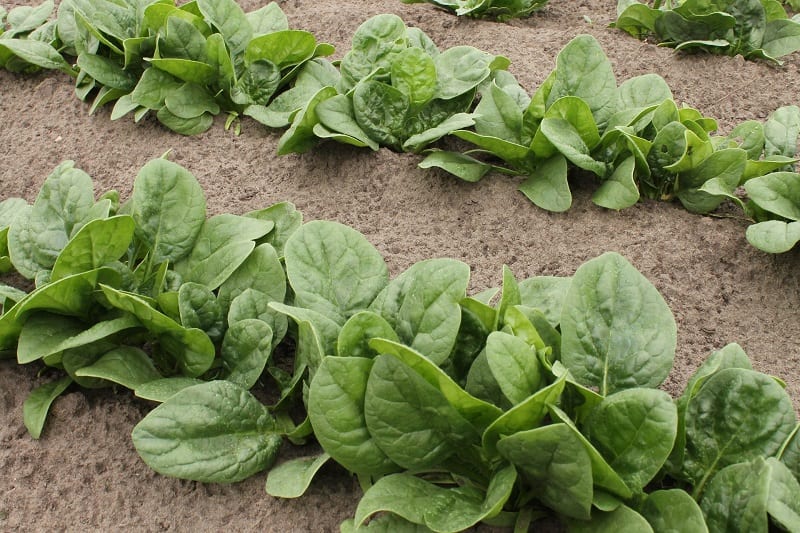
Baby Carrots
The carrot is not exactly a fast-growing vegetable, but you can circumvent a long growing season by harvesting baby carrots.
Tips to Growing Baby Carrots
Baby carrots let you enjoy crisp, tender roots far sooner than full-size varieties. Loosen soil deeply to at least twelve inches to allow roots to grow straight. Mix in compost or well-rotted manure to improve fertility. Sow seeds thinly in narrow rows spaced twelve inches apart. Cover seed rows with a light dusting of soil.
Keep soil damp by watering gently every day. Thin seedlings to one inch apart when true leaves reach two inches tall. Hill soil around roots at four weeks to encourage uniform shape. Apply a low-nitrogen organic fertilizer once plants reach three inches. Use floating row covers to protect against pests like carrot rust flies.
Maintain soil pH between 6.0 and 6.8 for best growth. Harvest baby carrots when they reach a half-inch diameter. Pull roots gently with a garden fork to avoid damage. You’ll have sweet baby carrots ready in about thirty days.
Dishes You Can Make with Baby Carrots
Baby carrots demonstrate why hearty roots can still rank among the fastest growing vegetables when harvested young. For honey-glazed carrots, preheat a skillet and steam one pound of baby carrots until just tender. Melt three tablespoons of butter and stir in two of honey and a pinch of cinnamon. Toss the carrots over medium heat for three minutes until glossy, then finish with fresh parsley and a squeeze of lemon juice.
For a ribbon-style salad, peel carrots into long ribbons with a vegetable peeler. Toss with two tablespoons of olive oil, one of lemon juice, and chopped mint leaves. Season with salt and pepper, let rest ten minutes, and garnish with toasted almond slivers or crumbled feta. Serve chilled alongside grilled meats or fish.
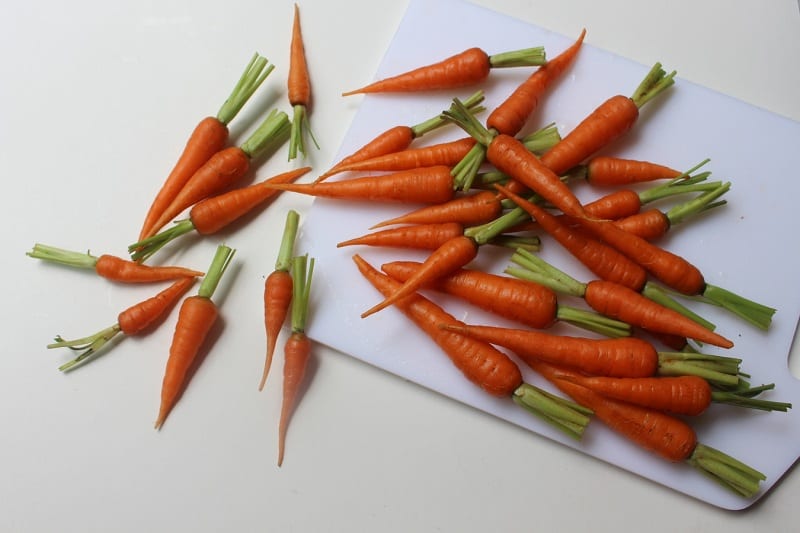
Cucumbers
Cucumbers are vigorous growers. That’s why they need between 1 and 2 inches of water a week, depending on the weather and the characteristics of your soil.
Tips to Growing Cucumbers
Cucumbers thrive when they have warm soil and full sun. Plant seeds or transplants after all danger of frost is past. Use fertile, well-drained soil mixed with compost. Space bush varieties one foot apart and vining types three feet apart.
Support vining plants with sturdy trellises or stakes. Water deeply once or twice per week to supply one to two inches of water. Apply mulch to keep soil cool and preserve moisture. Side-dress with a balanced organic fertilizer when vines start to flower. Remove lower leaves to improve air flow and reduce disease risk. Hand-pollinate flowers early in the season if pollinators are scarce.
Watch for pests like cucumber beetles and treat organically if needed. Harvest fruits when they reach three to five inches long for best flavor. You can start picking cucumbers in about fifty days.
Dishes You Can Make with Cucumbers
Cucumbers often surprise gardeners as one of the fastest growing vegetables when you harvest them small. For a classic cucumber salad, slice two large cucumbers thinly and toss with red onion rings. Drizzle a dressing of rice vinegar, sugar, and sesame oil. Add chopped cilantro and toasted sesame seeds, then chill fifteen minutes so flavors meld.
For quick refrigerator pickles, pack cucumber spears into a jar with garlic cloves and dill sprigs. Pour a brine of equal parts water and vinegar, plus salt. Let it sit in the fridge at least two hours. For extra heat, drop in jalapeño slices. Adjust sugar to taste. Serve pickles within a week for best crunch. These methods show why cucumbers earn their spot among the fastest growing vegetables gardeners plant.

Maximizing Yields in the Shortest Possible Time
There are many reasons for you to want a quick harvest. Fast-growing vegetables are a great way to maximize your yields, after all. If you are growing any of the vegetables in this list in a greenhouse, you can raise as many plants as possible in a year.
If you’re growing your crops outside in your garden, fast-growing vegetables allow you to get the most out of each square foot of growing space.
So, what are you waiting for? Go out and plant some vegetables in your garden now!








